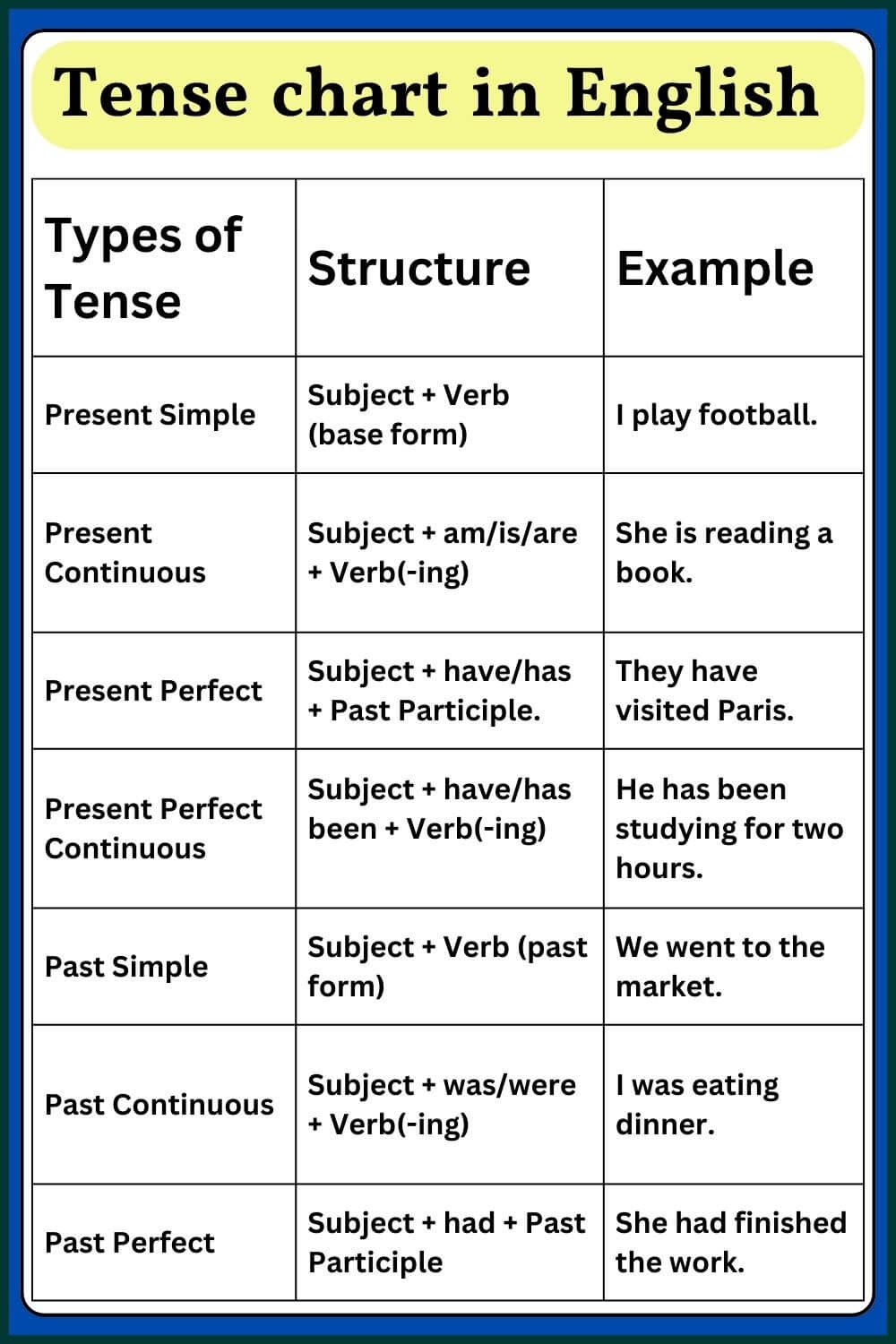Verb tenses are an essential part of English grammar as they indicate the time at which an action takes place. Understanding verb tenses helps in effective communication and writing. By using the correct tense, you can convey the exact meaning you intend to express.
English language has various tenses, each serving a specific purpose. To navigate through the complexities of verb tenses, a verb tenses chart can be a handy tool. It provides a visual representation of the different tenses, making it easier to grasp and use them correctly.
English Verb Tenses Chart
The English verb tenses chart typically includes the simple present, present continuous, simple past, past continuous, present perfect, past perfect, future simple, and future continuous tenses. Each tense is accompanied by examples to illustrate how they are used in context.
The simple present tense is used to describe habitual actions or general truths. For example, “He plays football every Sunday.” The present continuous tense indicates actions happening at the moment or temporary situations. For instance, “She is studying for her exams.” The simple past tense is used to talk about actions that happened in the past. For example, “They visited Paris last summer.”
The past continuous tense describes actions that were ongoing in the past. For instance, “I was reading a book when you called.” The present perfect tense is used to talk about past actions with present relevance. For example, “I have finished my homework.” The past perfect tense indicates actions that were completed before a certain point in the past. For instance, “She had already left by the time I arrived.”
The future simple tense is used to talk about actions that will happen in the future. For example, “They will meet us at the airport tomorrow.” The future continuous tense describes actions that will be ongoing at a specific time in the future. For instance, “I will be working on my project this time next week.”
By referring to an English verb tenses chart, you can enhance your understanding of how to use different tenses correctly. Practice using the chart with exercises to improve your communication skills and writing abilities. With regular practice, you will become more confident in using verb tenses accurately in your conversations and written pieces.
In conclusion, mastering English verb tenses is crucial for effective communication. The verb tenses chart serves as a valuable resource to help you navigate through the complexities of tenses. By familiarizing yourself with the different tenses and practicing their usage, you can enhance your language skills and convey your thoughts with precision.
